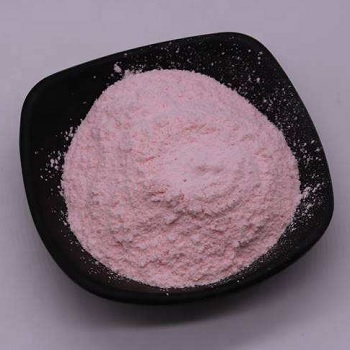| Identification | More | [Name]
Cobalt acetate | [CAS]
71-48-7 | [Synonyms]
COBALT ACETATE
COBALT(II) ACETATE
acetatecobalteux
Aceticacid,cobalt(2+)salt
aceticacid,cobalt(2++)salt
bis(acetato)cobalt
cobalt(2+)acetate
cobaltacetate(co(oac)2)
cobaltousdiacetate
Cobalt (II) acetate anhydrous
Cobalt(Ⅱ) acetate tetrahydrate
Cobalt (Ⅱ)acetate
COBALT(II) ACETATE, 99.995%
COBALT (II) ACETATE-4-HYDRATE MIN. 99%
CobaltAcetateAcs
Cobalt(II) acetate, anhydrous, 98+%
Cobaltous acetate
Cobalt (II) Aceate Anhydrous
Cobaltous acetate anhydrous
Bisacetic acid cobalt(II) | [EINECS(EC#)]
200-755-8 | [Molecular Formula]
C4H6CoO4 | [MDL Number]
MFCD00008689 | [Molecular Weight]
177.02 | [MOL File]
71-48-7.mol |
| Chemical Properties | Back Directory | [Appearance]
Violet Crystalline Powder | [Melting point ]
298 °C (dec.)(lit.)
| [density ]
1.7043g/cm3 | [solubility ]
Aqueous Acid (Slightly), Water (Slightly) | [form ]
Powder | [color ]
Pale pink to purple | [Water Solubility ]
Soluble in water, alcohol, dilute acids and pentyl acetate(tetrahydrate). | [Sensitive ]
Hygroscopic | [Merck ]
14,2433 | [Stability:]
Hygroscopic | [InChIKey]
QAHREYKOYSIQPH-UHFFFAOYSA-L | [LogP]
-0.285 (est) | [Uses]
Sympathetic inks, paint and varnish driers, catalyst, anodizing, mineral supplement in feed additives, foam stabilizer. | [CAS DataBase Reference]
71-48-7(CAS DataBase Reference) | [EPA Substance Registry System]
71-48-7(EPA Substance) |
| Safety Data | Back Directory | [Hazard Codes ]
Xn | [Risk Statements ]
R22:Harmful if swallowed.
R36/37/38:Irritating to eyes, respiratory system and skin .
R40:Limited evidence of a carcinogenic effect.
R43:May cause sensitization by skin contact.
R53:May cause long-term adverse effects in the aquatic environment. | [Safety Statements ]
S22:Do not breathe dust .
S26:In case of contact with eyes, rinse immediately with plenty of water and seek medical advice .
S36/37/39:Wear suitable protective clothing, gloves and eye/face protection .
S45:In case of accident or if you feel unwell, seek medical advice immediately (show label where possible) . | [RIDADR ]
UN 3077 9 / PGIII | [WGK Germany ]
2
| [RTECS ]
AG3150000
| [TSCA ]
Yes | [HazardClass ]
9 | [Safety Profile]
Poison by intravenous
route. Moderately toxic by ingestion.
Questionable carcinogen. Mutation data
reported. See also COBALT
COMPOUNDS. When heated to
decomposition it emits acrid smoke and
irritating fumes. | [Hazardous Substances Data]
71-48-7(Hazardous Substances Data) |
| Hazard Information | Back Directory | [General Description]
Red-violet crystalline solid. Vinegar-like odor. | [Reactivity Profile]
Salts, basic, such as COBALT ACETATE(71-48-7), are generally soluble in water. The resulting solutions contain moderate concentrations of hydroxide ions and have pH's greater than 7.0. They react as bases to neutralize acids. These neutralizations generate heat, but less or far less than is generated by neutralization of the bases in reactivity group 10 (Bases) and the neutralization of amines. They usually do not react as either oxidizing agents or reducing agents but such behavior is not impossible. | [Air & Water Reactions]
Water soluble. Deliquescent | [Hazard]
May not be used in food products (FDA). | [Health Hazard]
Inhalation causes shortness of breath and coughing; permanent disability may occur. Ingestion causes pain and vomiting. Contact with eyes causes irritation. Contact with skin may cause dermatitis. | [Fire Hazard]
Special Hazards of Combustion Products: Toxic cobalt oxide fumes may form in fire. | [Chemical Properties]
Violet Crystalline Powder or Pale pink to purple Powder. Catalyzer for oxidizing dimethylbenzene, desiccant for coating, mordant for printing, accelerant for solidifying glass.

Cobalt(II) acetate is one of the compounds recommended for colouring the oxide layer formed on aluminium and its alloys by anodizing.
| [Physical properties]
Red-to-violet monoclinic crystals (anhydrous acetate is light pink in color); density 1.705 g/cm3; becomes anhydrous when heated at 140°C; soluble in water, alcohols and acids. | [Definition]
ChEBI: A cobalt salt in which the cobalt metal is in the +2 oxidation state and the counter-anion is acetate. | [reaction suitability]
core: cobalt |
| Questions And Answer | Back Directory | [Uses]
Cobalt(II) acetate is used for bleaching and drying varnishes and laquers. Other applications are: as a foam stabilizer for beverages; in sympathetic inks; as a mineral supplement in animal feed; and as a catalyst for oxidation. It also is used in aluminum anodizing solutions.
| [Preparation]
Cobalt(II) acetate is prepared by dissolving cobalt(II) carbonate or hydroxide in dilute acetic acid, followed by crystallization. Also, it may be prepared by oxidation of dicobalt octacarbonyl in the presence of acetic acid.
|
|
|






